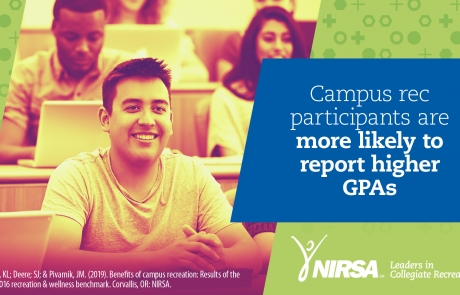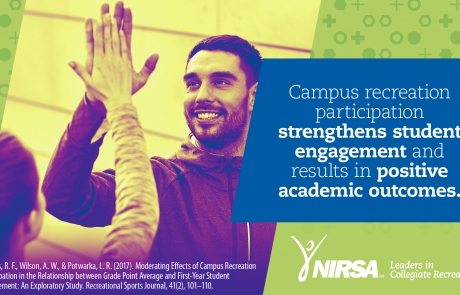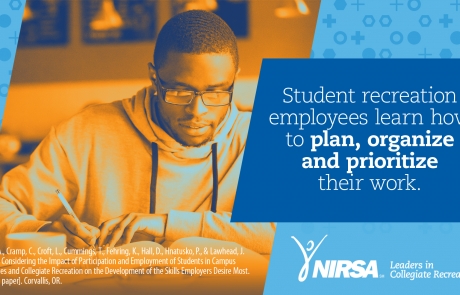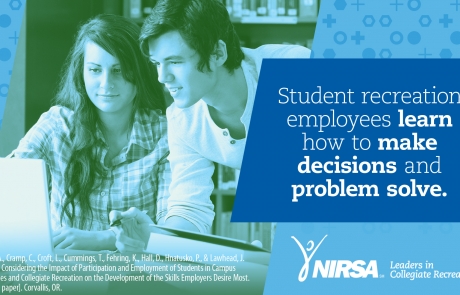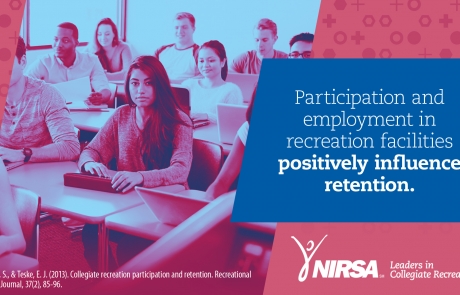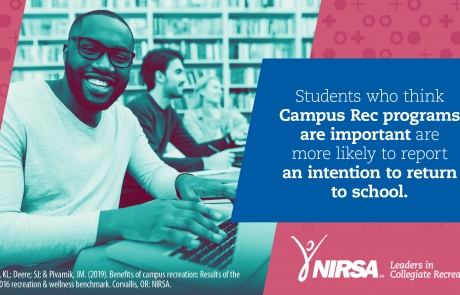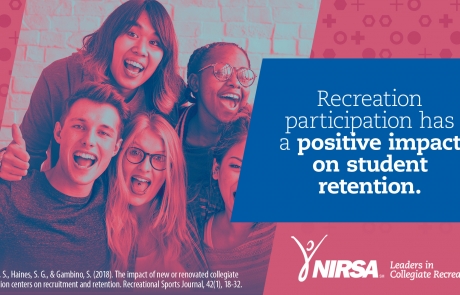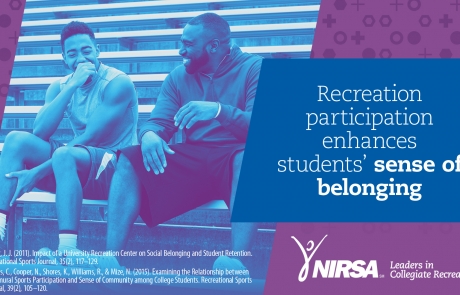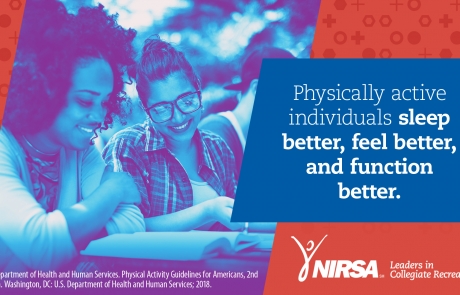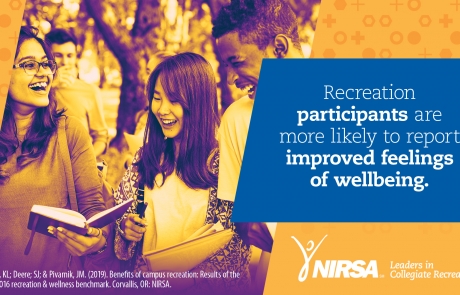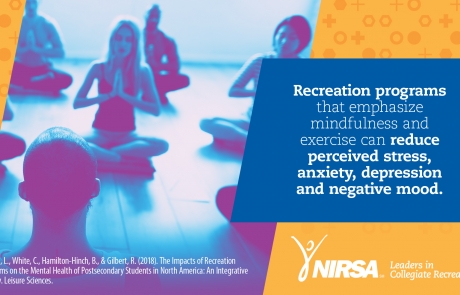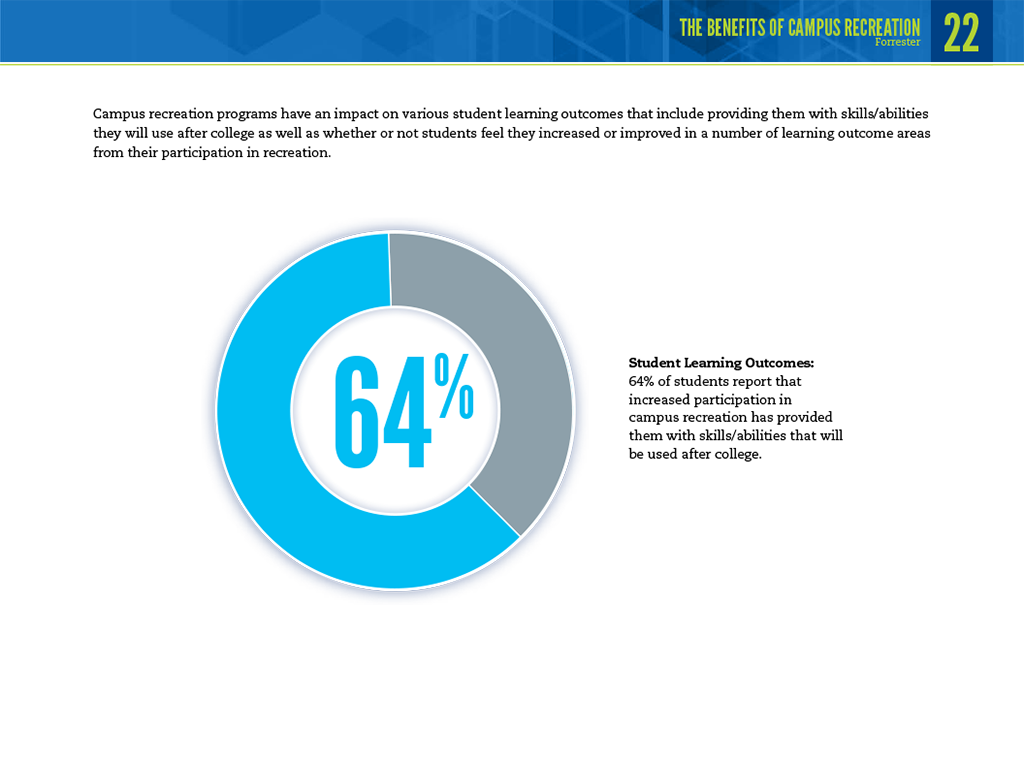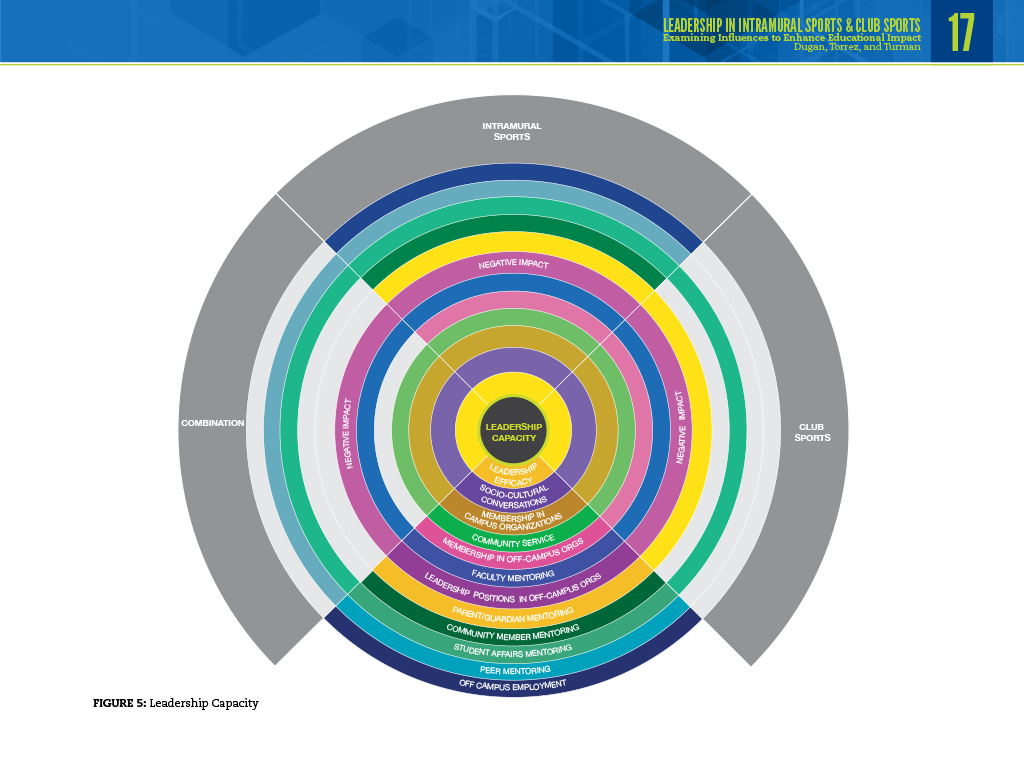Value of Campus Recreation
Campus Recreation programs and services enhance the student experience in many different ways and evidence continues to demonstrate the degree to which various forms of recreation influence multiple, student-related outcomes.
The positive effects of recreation participation reinforce the value that campus recreation provides to the campus community. An organizational framework was developed by the 2019-2020 NIRSA Research & Assessment committee to describe the full scope of these effects. The purpose of this project is to provide campus recreation professionals, the campus community and the general public with an understanding of the evidence that supports the value of campus recreation through the use of easy-to-use, multimedia content of research-based materials.
Citations
The visuals above were curated from the following sources.
Elkins, D. J., Forrester, S. A., & Noël-Elkins, A. V. (2011). The Contribution of Campus Recreational Sports Participation to Perceived Sense of Campus Community. Recreational Sports Journal, 35(1), 24–34.
Ellis, G. D., Compton, D. M., Tyson, B., & Bohlig, M. (2002). Campus Recreation Participation, Health, and Quality of Life. Recreational Sports Journal, 26(2), 51–60.
Fenton, L., White, C., Hamilton-Hinch, B., & Gilbert, R. (2018). The Impacts of Recreation Programs on the Mental Health of Postsecondary Students in North America: An Integrative Review. Leisure Sciences.
Kampf, S., & Teske, E. J. (2013). Collegiate recreation participation and retention. Recreational Sports Journal, 37(2), 85-96.
Kampf, S., Haines, S. G., & Gambino, S. (2018). The impact of new or renovated collegiate recreation centers on recruitment and retention. Recreational Sports Journal, 42(1), 18-32.
Mayers, R. F., Wilson, A. W., & Potwarka, L. R. (2017). Moderating Effects of Campus Recreation Participation in the Relationship between Grade Point Average and First-Year Student Engagement: An Exploratory Study. Recreational Sports Journal, 41(2), 101–110.
Miller, J. J. (2011). Impact of a University Recreation Center on Social Belonging and Student Retention. Recreational Sports Journal, 35(2), 117–129.
Peck, A., Cramp, C., Croft, L., Cummings, T., Fehring, K., Hall, D., Hnatusko, P., & Lawhead, J. (2015). Considering the Impact of Participation and Employment of Students in Campus Activities and Collegiate Recreation on the Development of the Skills Employers Desire Most. [White paper]. Corvallis, OR.
Phipps, C., Cooper, N., Shores, K., Williams, R., & Mize, N. (2015). Examining the Relationship between Intramural Sports Participation and Sense of Community among College Students. Recreational Sports Journal, 39(2), 105–120.
U.S. Department of Health and Human Services. Physical Activity Guidelines for Americans, 2nd edition. Washington, DC: U.S. Department of Health and Human Services; 2018.
Vasold, K.L., Deere, S.J., & Pivarnik, J.M. (2019). The relationship between club and intramural sports participation and academic success. Recreational Sports Journal, 43(1), 55–66.
Vasold, KL; Deere; SJ; & Pivarnik, JM. (2019). Benefits of campus recreation: Results of the 2011-2016 recreation & wellness benchmark. Corvallis, OR: NIRSA.
Thank You
Thanks to the follow NIRSA Members for their invaluable contributions to this project.


